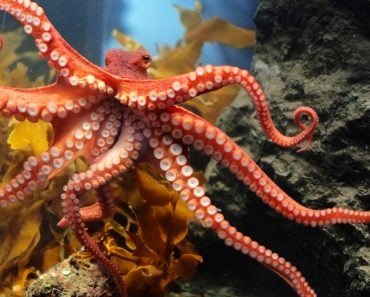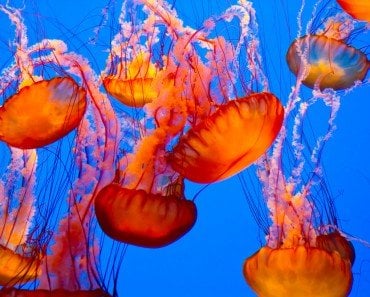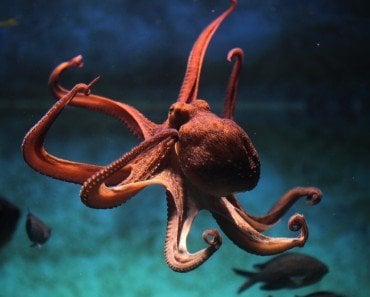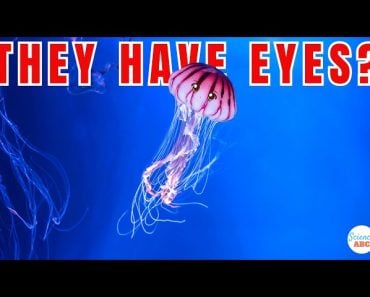Table of Contents (click to expand)
Octopuses and most other cephalopods are colorblind, as they only have one visual pigment. Scientists have suggested two hypotheses for how these animals can camouflage in spite of their colorblindness: they either have eyes in their skin or their eyes perform chromatic aberration.
One of the most striking features of octopuses and cephalopods like squids, cuttlefish, and nautilus is that they’re all pros in the art of camouflaging. They can expertly adapt not only the color of their skin, but also the texture. Most impressively, they do all this without even being able to see the colors they’re adopting.
Octopuses and every other cephalopod, it turns out, are colorblind!
During the 20th century, we discovered that cephalopods have only one visual pigment. Scientists dissected the eyes of Octopus vulgaris and found a single visual pigment within its photoreceptors—an R-type-opsin that absorbs visible light within the 475 – 360 nm range of wavelength. Theoretically, this means that octopuses are only able to see shades of black and white.
There is an obvious problem here… how can a creature with such proficiency in camouflaging be colorblind?
Recommended Video for you:
Masters Of Disguise
Cephalopods, especially octopuses and cuttlefish, are some of the most sophisticated masters of camouflage on the planet. In fact, they even have different types of camouflage patterns.
Body patterns with little variation are said to be uniform patterns. The octopus resorts to this kind of basic pattern of small silt particles on the sea floor. Small-scale light and dark patches and a lack of pattern repetition are characteristics of mottled patterns caused by large gravel particles. Conspicuous light and dark patches of different sizes, shapes, and orientations create disruptive patterns, triggered by large stones.
This impressive range of pattern options are the result of several tricks of light achieved by their skin.
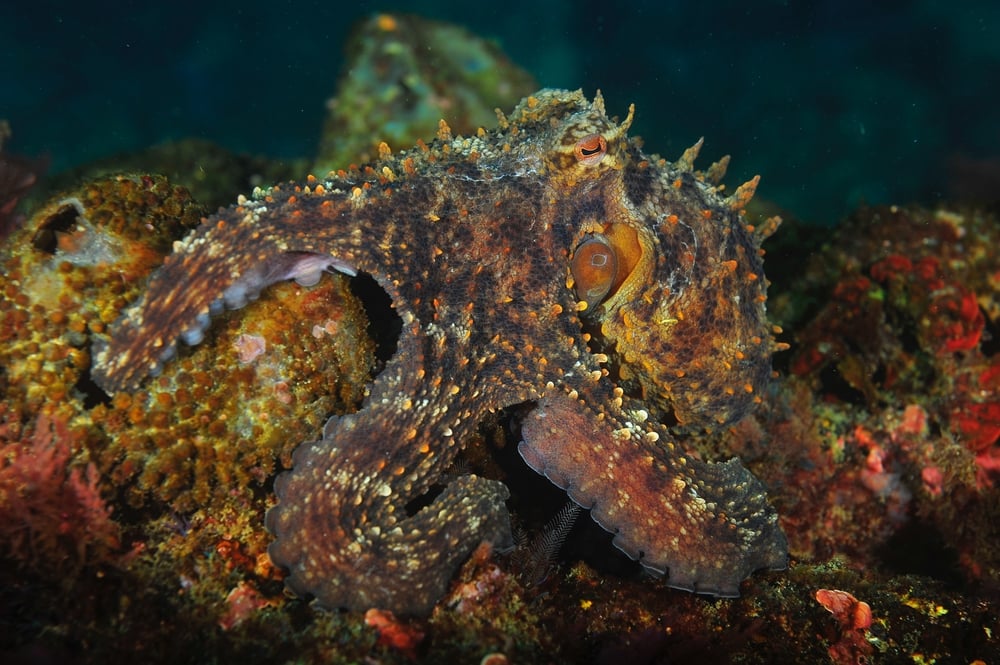
First, under their skin, cephalopods have small organs called chromatophores with little pigment sacs inside that are responsible for the color change. More precisely, they determine how big or small the pigments sacs are, which then determine the color change. The pigment expands beneath the skin when these sacs are opened by muscles surrounding them. Because these chromatophores are nerve-controlled, they can open quickly, allowing octopuses, cuttlefish, and squid to change color in milliseconds.
Basically, the octopuses’ nervous system informs the muscles around the pigment sac as to how big or small the pigment sac should be.
However, chromatophores have only three colored pigments—red, yellow and brown—and some cephalopods can achieve camouflage in a much wider range of colors.
Other studies have suggested that the skin of the octopus has little structures called iridophores and leucophores that can reflect light.
Iridophores reflects light at different wavelengths and are responsible for bright blue and red patterns displayed by cephalopods. Leucophores, on the other hand, are thought to affect the intensity of the chromatophores by providing a white backdrop.
That being said, this range of color still requires the cephalopods to be able to detect the change.
Eyes In Their Skin?
Interestingly, scientists have used various checkerboard patterns to see if cephalopods can effortlessly blend in. It has been noted that colors of matching brightness do not illicit a color-changing response. In the experimental setting, where octopuses quickly picked up contrasting backgrounds like black and white, they couldn’t distinguish between brightly colored checkerboards like yellow and blue, further adding to the mounting evidence that octopuses are colorblind.
One hypothesis is that some cephalopods can see via their skin. According to a study published in The Journal of Experimental Biology in 2015, the skin of cephalopods contain rhodopsin, a light-sensitive protein typically found in retinas. Along with this fact, light-activated chromatophore expansion readings clearly show that octopus skin can detect light all by itself, independent of eyes.
This might explain the research that pointed to cephalopods being able to color change even without their eyes, although further research has corroborated neither the presence of rhodopsin in the skin or color changing without eyes.
So assuming the octopuses and squids and cuttlefish do need their eyes for their color-changing behaviors, what other hypotheses are there?
Chromatic Cosplay
These creatures might be colorblind in the traditional sense, but may display a more complex mechanism of visual recognition of colors by exploiting chromatic aberration.
In simple terms, chromatic aberration is the inability of a lens to bring all the constituent colors of white light to a common focus point. This results in a slightly different focal point for each wavelength, which leads to colored fringes surrounding an image.
The peculiar off-axis pupils of cephalopods and sporadic pupil shapes can be explained as an adaptation that enables them to take full advantage of the chromatic aberration principle.
These variables work together to help “colorblind” animals recognize colors.
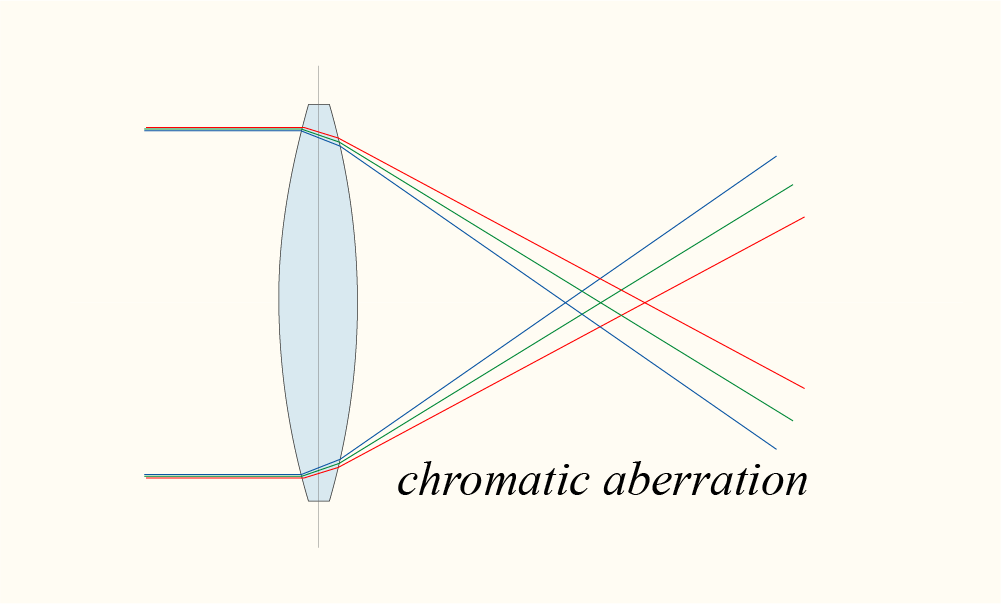
It’s All In The Pupils
That octopuses might see using chromatic aberration was first proposed in 2016 by a father-son duo. They modeled how an octopus’s pupil might interact with light to get chromatic aberration as an answer.
Round pupils in human and other mammalian eyes become narrowed to provide sharp vision with all the colors focusing at the same point. However, the 2016 study suggests that the wide and off-axis pupils enable cephalopods to judge color by focusing particular wavelengths on the retina.
Since white objects reflect all wavelengths, focusing on such objects would be a tougher task, and would consequently produce a low-resolution image. However, cephalopods can focus fairly precisely on objects that are more vividly colored, such as yellow or blue.
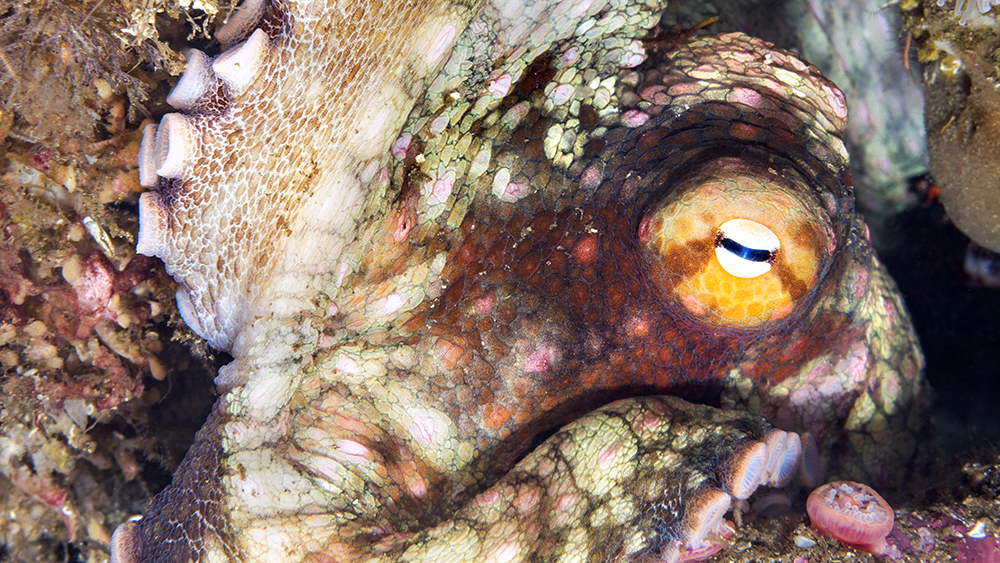
The research came to the conclusion that animals with U-shaped pupils, like squid and cuttlefish, would be able to distinguish between colors depending on whether or not light was focused on their retina. Many octopuses have dumbbell-shaped pupils that function similarly. These cephalopods see a blurry image, signaling the need to shift focus and widen their pupils, but the image is colored.
This has yet to be experimentally tested, and without that evidence, chromatic aberration is still just a theory.
Conclusion
Scientists are fascinated by the working of the cephalopod eye, as it is a different model of vision from so many others. Moreover, the eyes of humans and octopuses share many characteristics. The human eye and the octopus eye, according to some scientists, are illustrations of convergent evolution. The iris, lens, vitreous humor, pigment cells, photoreceptors, retina, and optic nerve are the main components of an octopus eye. You may recognize those anatomical terms because they describe the same structures in our own eyes!
The octopus eye’s lens is movable, allowing the creatures to achieve a focused image. This is very similar to how you would focus a camera or telescope. Vertebrates like humans modify the shape of our lens to focus. Also, in contrast to humans, octopuses enjoy a complete field of vision with no blind spots.
References (click to expand)
- Messenger, J. B., Wilson, A. P., & Hedge, A. (1973, August 1). Some Evidence for Colour-Blindness in Octopus. Journal of Experimental Biology. The Company of Biologists.
- Hanke, F. D., & Kelber, A. (2020, January 14). The Eye of the Common Octopus (Octopus vulgaris). Frontiers in Physiology. Frontiers Media SA.
- Cronin, T. W., & Porter, M. L. (2014). The Evolution of Invertebrate Photopigments and Photoreceptors. Evolution of Visual and Non-visual Pigments. Springer US.
- Stubbs, A. L., & Stubbs, C. W. (2016, July 5). Spectral discrimination in color blind animals via chromatic aberration and pupil shape. Proceedings of the National Academy of Sciences. Proceedings of the National Academy of Sciences.


